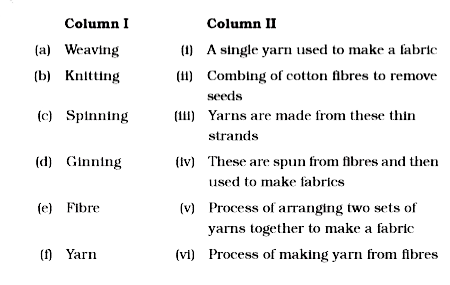Match the statements given in Column I with the oxidation states given in Column II. 
i−c,ii−a,iii−e,iv−b
i−c,ii−a,iii−b,iv−e
i−a,ii−c,iii−b,iv−e
i−e,ii−c,iii−b,iv−a
The correct Answer is:A
Step by step video, text & image solution for Match the statements given in Column I with the oxidation states given in Column II. by Chemistry experts to help you in doubts & scoring excellent marks in Class 12 exams.
Updated on:21/07/2023Topper's Solved these Questions
- D BLOCK & TRANSITION ELEMENTSBook:NARAYNAChapter:D BLOCK & TRANSITION ELEMENTSExercise:Level-IV (Multiple Answer)
Explore 1 Video
- D BLOCK & TRANSITION ELEMENTSBook:NARAYNAChapter:D BLOCK & TRANSITION ELEMENTSExercise:Level-I (H.W)
Explore 60 Videos
- D BLOCK & TRANSITION ELEMENTSBook:NARAYNAChapter:D BLOCK & TRANSITION ELEMENTSExercise:Level-III
Explore 43 Videos
- D - BLOCK ELEMENTSBook:NARAYNAChapter:D - BLOCK ELEMENTSExercise:CHECK YOUR GRASP
Explore 7 Videos
- ELECTRO CHEMISTRY Book:NARAYNAChapter:ELECTRO CHEMISTRY Exercise:EXERCISE - IV
Explore 44 Videos
Similar Questions
Match the statements given in Colunm I with the oxidation states given in Column II.

View SolutionMatch the statement given in Column I with the phenomenon given in Column II.

View SolutionMatch the statements/expressions given in Column I with the values given in Column II.

View SolutionMatch the statements/expressions given in Column I with the values given in Column II.

View SolutionMatch the statements/expressions given in Column I with the values given in Column II.

View SolutionMatch the statements/expressions given in Column I with the values given in Column II. '

View SolutionMatch the statements/expressions given in Column I with the values given in Column II.

View SolutionMatch the reactions given in Column I with the types of reactions given in Column II.

View SolutionMatch the terms given in Column I with the statements given in Column II

View SolutionMatch the statement given in Column I. with the phenomenon given in column II.
View Solution

